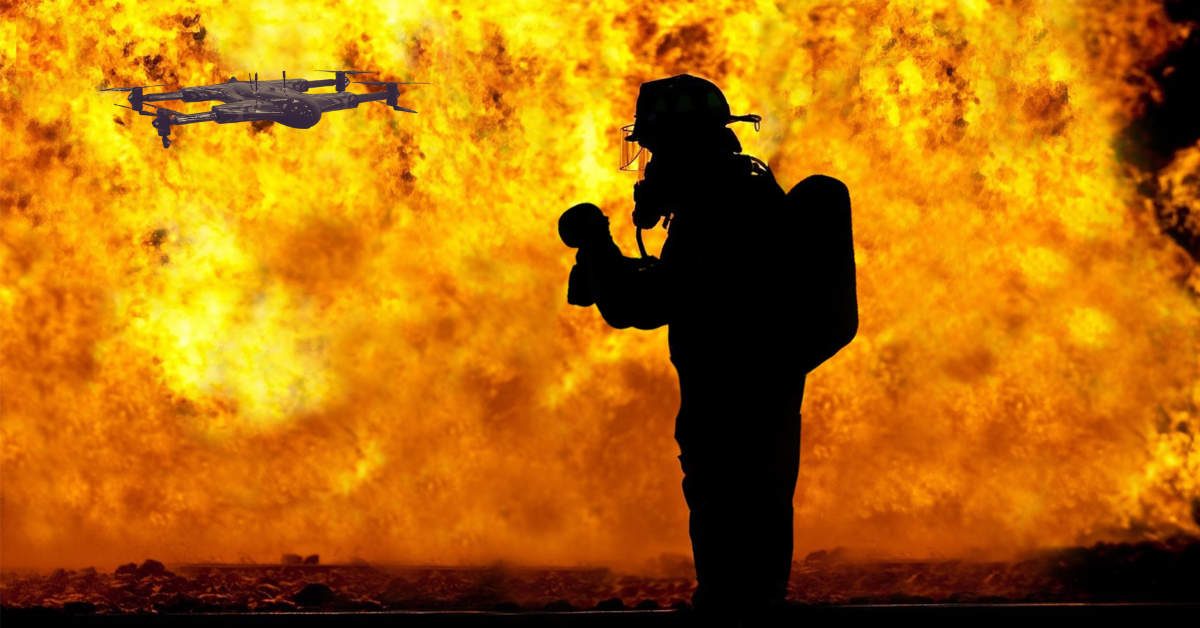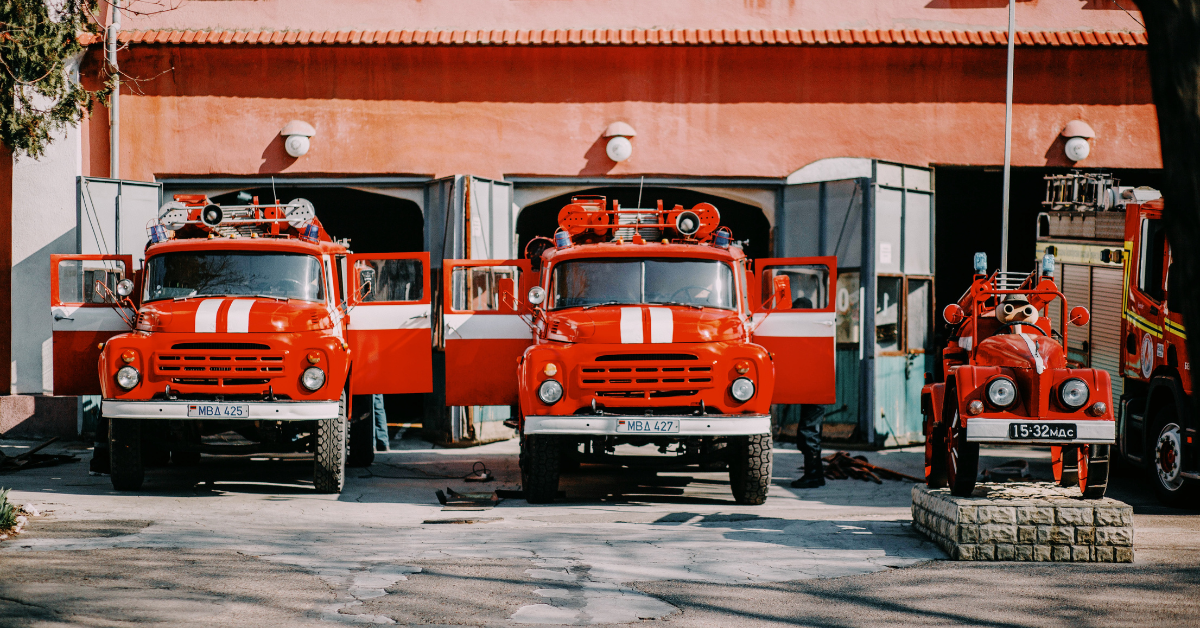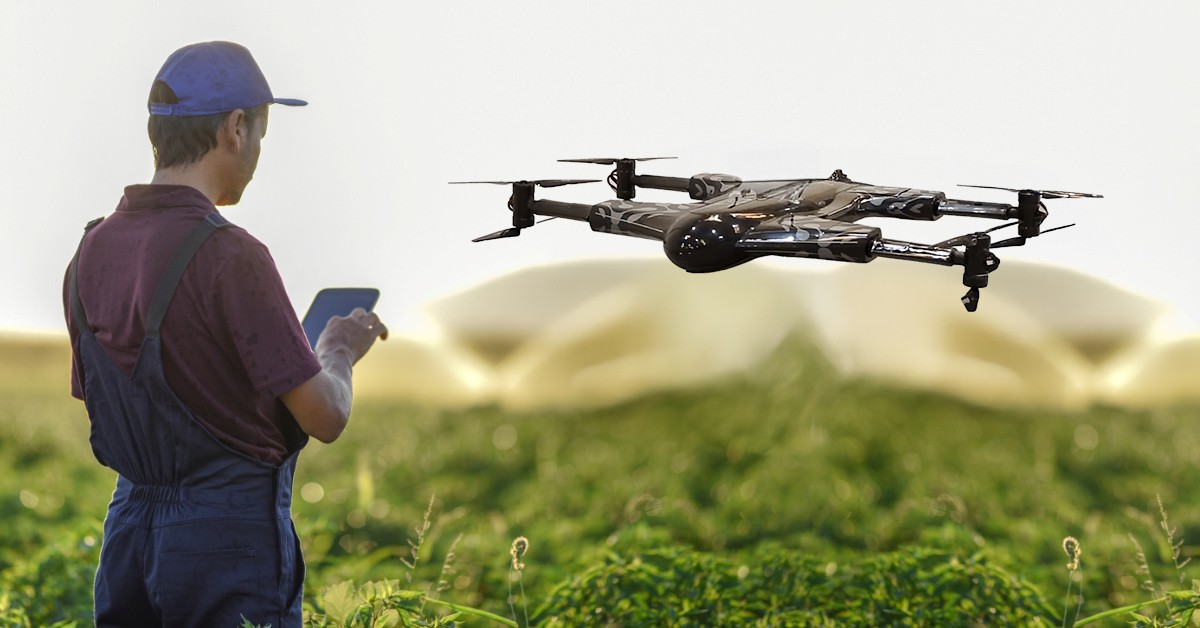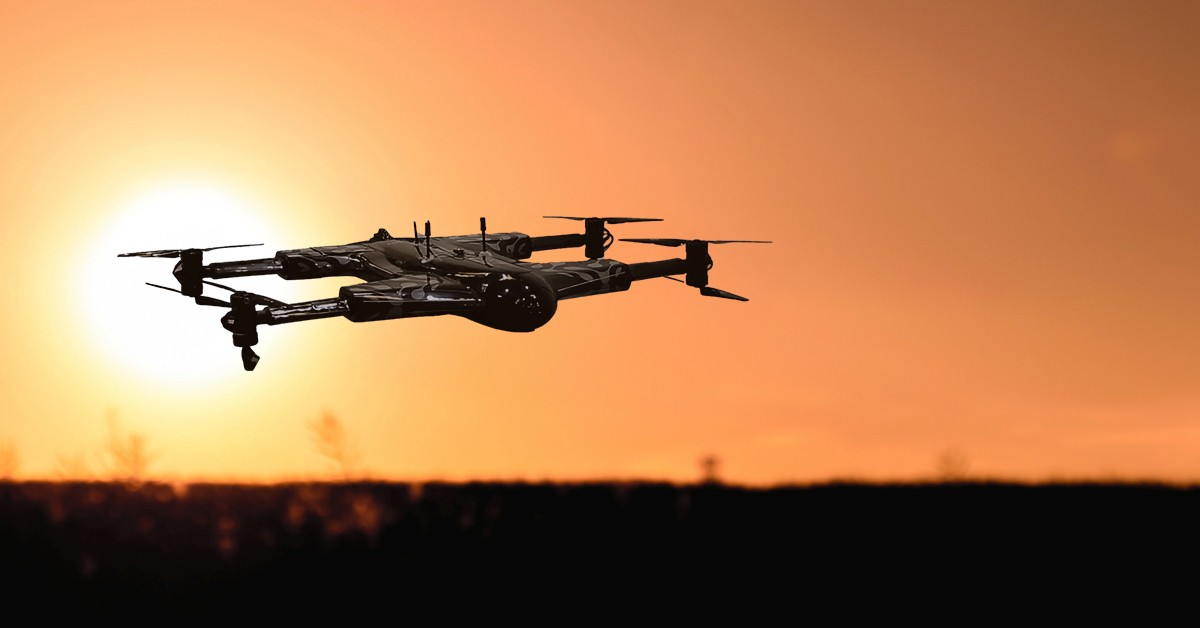Fire Department Drones – How They Enhance Firefighting Operations
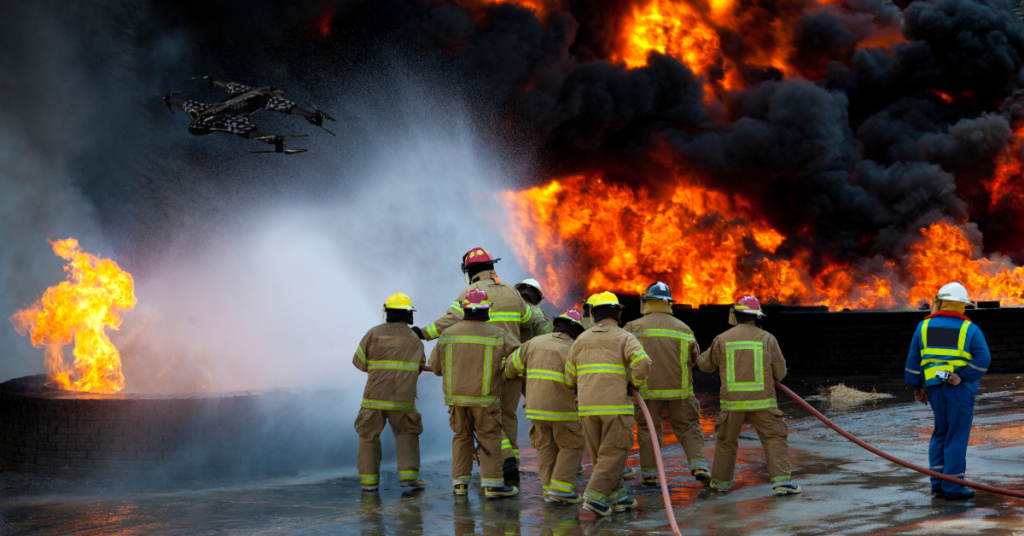
Firefighting is one of the most dangerous jobs in the world. Being a firefighter entails knowing that every second counts and the right technology can make the critical difference between life and death. This is why fire department drones are transforming emergency response operations. The unmanned aerial systems give firefighters real-time situational awareness to understand the hazards in an environment before entering a dangerous zone. A growing number of fire departments have deployed drones for fire detection, fire monitoring, and, finally, fire suppression. However, traditional methods rely on ground crews and helicopters, which can be slow and expensive. On the other hand, drones provide fast deployment, thermal imaging, and aerial mapping and are used to make more informed, quicker decisions for firefighters. In other words, drones provide emergency responders with important data during a raging wildfire, structural fire, or hazardous material spill.
Beyond emergencies, fire department drone programs are proving invaluable for training, investigation, and cost savings. Drones supplement the expensive helicopter surveillance, make firefighting safer for firefighters, and help reduce operations costs. With this technology, fire departments are increasingly integrating, and the future of firefighting will be safer, smarter, and more efficient. In this article, we’ll analyze what drones are doing for fire departments, the best models for firefighting, and the policies that govern drone adoption by fire departments. Whether you’re a firefighter or a decision-maker, understanding drones in the fire service can help your team save lives and resources.
How Fire Departments Are Integrating Drones
Reasons Why Fire Departments Are Using Drones
Firefighting is about response speed and accurate situational awareness. The longer you take, the greater the damage, the higher the risk, and perhaps the loss of life. This is why fire departments are turning to drones in the fire service to enhance response times and provide real-time aerial intelligence. Drones provide a distinct advantage over manual ground-based assessments. Drones can be flown over the fire area to quickly survey and gather information about fire behavior and the potential risks it poses on the surrounding areas.
The number of fire departments utilizing drones has increased significantly in recent years. Many government and disaster response agencies utilize drones to help with wildfire management and prevent the fire from spreading. Urban fire departments use them for structural fires, hazardous material incidents and structural collapse events. Today, some AI-powered drones can automate fire detection and send instant thermal imaging data to command centers.
Key Applications of Fire Department Drones
Fire Detection & Monitoring
- With drones, thermal imaging cameras can detect hotspots before they become a major fire.
- Drones help firefighters keep track of fire movement and predict the spread patterns in large-scale wildfires.
Aerial Surveillance & Mapping
- The live drone feeds give them a 360-degree view of a fire incident that lets them coordinate effectively.
- The maps for pre-fire planning and post-fire analysis are generated with high-resolution cameras.
Search & Rescue Operations
- Drones with infrared sensors can find those trapped in foggy, smoggy, or debris-filled visibility.
- Drones outperform human teams in terms of coverage over large areas in a faster time.
Hazmat & Disaster Response
- Drones assess the danger zone before human responders enter chemical spills or collapsed buildings.
- It decreases the firefighter’s exposure to toxic fumes, radiation, or unstable structures
Types of Drones Used in Fire Response
Many fire departments use drones which are beneficial in their line of work. Depending on the type of emergency, drones consisting of specialized components can help address various disaster situations. It is apparent that drones have become instrumental in monitoring disaster progression and data collection, as well as using drones for direct fire suppression and emergency support. Each type has a very important role in modern firefighting operations.
Surveillance and Thermal Imaging Drones
- Most drones are equipped with infrared sensors, making it possible to detect heat sources and find hot spots in fires even through heavy smoke.
- They are used by firefighters in wildfires, industrial fires and urban blazes to monitor fire spread in real time.
- Thermal imaging allows commanders to look at the dangerous zones without sending in firefighters.
Fire Suppression Drones
- Fire suppression drones carry fire retardants, foam, or water and deploy them directly over fire outbreaks.
- Their most important use is in hard-to-reach locations – high-rise buildings, remote forests, and industrial sites.
- By using extinguishing agents dropped at specific points, they decrease the fire intensity prior to allowing firefighters to enter.
Heavy-Lift Drones for Firefighting Support
- It is adapted to carry the required firefighting equipment, medical supplies, and rescue tools.
- If you compare these drones to other types of drones, there is no need for ground teams to carry heavy loads through hazardous environments.
- They give first responders immediate access to life-saving gear in disaster-stricken areas.
Autonomous and AI-powered drones
- Since AI-powered drones require minimal human intervention, they are perfect for high-risk jobs.
- They use Predictive analytics to monitor fire growth, suggest containment strategies, and automate aerial surveillance.
- Some of these models can patrol fire-prone areas and alert the fire department when it detects smoke or abnormal heat levels.
Benefits of Using Drones in Fire Service
Drones are being added to the operations of fire departments worldwide to increase safety, improve efficiency, and lower costs. These high-tech aerial tools give firefighters valuable insights during emergencies so that they can make informed decisions.
Enhancing Firefighter Safety
- Drones send real-time data before firefighters find themselves in dangerous situations, such as intense heat, smoke, and unstable structures. Trotting around fire-damaged buildings, they look for weak points to prevent sudden collapses.
- Drones are used to analyze toxic gas levels in hazardous material (HAZMAT) incidents without endangering personnel.
- Drones help firefighters to avoid life-threatening situations during wildfires by tracking the location of the fire.
Improving Fire Response Efficiency
- Immediate aerial assessments are possible because drones arrive at fire sites faster than ground teams. They have thermal imaging cameras to locate hidden fire sources, which firefighters might otherwise miss.
- Incident commanders get real-time situational awareness, thus helping their decisions with a 360-degree aerial view.
- Drones equipped with infrared sensors speed up the location of trapped victims in search and rescue missions drone, even in dense smoke or a collapsed structure.
Reducing Operational Costs
- Helicopters are a costly means of operation for fire departments, but drones cost less.
- Drones do not need much maintenance or fuel, unlike helicopters.
- The department optimizes resource allocation to ensure that firefighting teams and equipment are used only when and where needed.
Data Collection & Post-Fire Analysis
- Drones record high-resolution footage of fires both before and after they occur so that investigators can determine the cause.
- It helps with fire prevention strategies and risk identification in urban planning for fire-prone areas.
- Departments use drone footage for training exercises to prepare for the next emergency response.
With these advantages, fire department drones are transforming firefighting operations. AI-powered drones and automation are about to have some of the most powerful impacts on Fire safety and disaster response.
Fire Department Drone Programs & Policies
Well-structured drone programs are becoming increasingly important as fire departments use drones for emergency response. The programs ensure that firefighters are adequately trained, drone operations are by the regulations, and funding is obtained for sustainable use.
Fire Departments and the Execution of Drone Programs
- Fire departments are gaining the ability to develop Standard Operating Procedures (SOPs) to define how and when drones can be deployed.
- Training firefighters as certified drone operators through specialized programs and FAA licensing courses.
- Regular drills to ensure drone pilots can navigate a fire scene efficiently.
- Building dedicated drone units for various wildfires, structural fires and search and rescue operations.
Regulations & Challenges in Fire Department Drone Adoption
While drones promise several benefits, fire departments must adapt to a readymade bureaucracy and operational constraints.
- FAA Regulations & Licensing: As mandated by the Federal Aviation Administration (FAA), public safety drone operators must secure either a Part 107 license or a Certificate of Authorization (COA) for sweeping emergencies.
- Privacy Concerns: Drones capture aerial footage, which raises public surveillance concerns in urban areas. Departments must clearly define data collection and storage.
- Budget Constraints: Funding for drone programs can be difficult for fire departments, as they need hardware, software, maintenance and training costs.
How Fire Departments Can Overcome These Challenges
Fire departments are trying to do this to address these obstacles.
- Drone grants from fire department agencies, nonprofits, and private organizations.
- Partnering with technology companies for discounted drone training programs and advanced AI-driven drone solutions.
- Establishing clear drone usage policies to balance safety, privacy, and regulatory compliance.
Fire departments can use drones to their fullest potential by overcoming these hurdles and realizing the advantages of safety, improved fire response, and saved lives. If properly trained, funded, and ideas, drone technology will continue to redefine modern firefighting with the weapon of the future.
Choosing the Right Drone for Fire Department Use
Factors that affect the selection of a the best drones for fire departments include:
- Thermal Imaging – Hotspots are identified, and the strength of the fire is measured.
- Payload Capacity – The ability to transport fire suppression agents, medical supplies, and additional sensors.
- Extended Battery Life – drone flying for more time is crucial in emergency fire emergencies.
- Automation & AI – It decreases human effort and increases response efficiency.
Manual vs. Autonomous Drones
- Less automated drones are easier to operate but need trained operators, while manual drones provide more control in the unpredictable.
- AI analyzes fire behavior, dangerous zones are navigated, and autonomous drones make data-driven decisions in real time.
Buying the appropriate drone technology guarantees fire departments will respond faster, reduce risks, and save more lives.
The Takeaway
It is increasingly becoming obvious how drones have revolutionized firefighting. They help fire departments track, locate, and bring the heat down faster and more effectively. Live from above, offering heat detection, and flying on their own, drones make for faster, safer, and more efficient fire response.
Fire departments are increasingly using drones in their daily operations. Drones help reduce dangers for firefighters, improve understanding of the situation, and help manage resources effectively. Some drones use artificial intelligence to autonomously detect fires and provide data on fire patterns to guide decisions.
The advancement of drones firefighting technology will make drones essential tools for firefighters. Advancements in self-flying drones coupled with AI systems and better heat-sensing cameras will continue to transform firefighting strategies. Firefighting organizations that commit resources to advanced drone technology will develop more substantial capabilities to handle future firefighting challenges.
Latest Posts
Social Profiles






